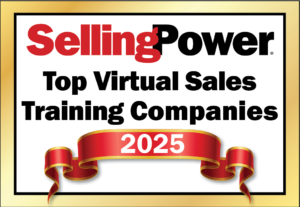How to Improve Sales Enablement to Deliver Better Results

Sales enablement has never been more important than it is today. Selling has become increasingly complex, and sellers are expected to be experts on the product, prospect, problem-solving, sales process, hybrid selling, and more.
Sales enablement – arming your sales reps with the knowledge, processes, methods, tools, and resources necessary to improve skills and help them sell – is essential to success.
But what happens if sales enablement isn’t done right? Some symptoms include:
- Longer sales rep ramp time
- Low win rate
- Low average deal size
- Longer sales cycle length
Robust sales enablement helps solve these issues while boosting quota and revenue target attainment. By contrast, a lack of enablement leaves sales organizations much less effective than they could be.
Strategies to Achieve Sales Enablement Priorities
In Top Sales Leadership Challenges and Priorities research, 423 sales, enablement, and company leaders identified their top sales challenges, including:
- Recruiting and hiring (finding strong sales talent): 52% find this very challenging
- Lead quality and quantity (generating qualified sales-ready leads): 41% find this very challenging
- Developing sales skills (driving and winning sales opportunities, growing accounts, consultative selling, prospecting, negotiating, etc.): 40% find this very challenging
- Developing sales managers: 36% find this very challenging
Fortunately, sales enablement can help address these challenges with three targeted strategies:
- Improve sales productivity
- Develop multi-skilled sellers
- Leverage sales managers
Unfortunately, misguided implementation causes enablement to miss the mark.
Productivity initiatives, for example, frequently center on technology or process. However, when productivity focuses on sellers’ effectiveness – such as time management and getting the right actions done – seller performance improves. Research shows that top-performing sellers are significantly more likely to excel in nine productivity behaviors.
Download RAIN Group’s “Top-Performing Seller” Report
Likewise, while sales skills training is already a priority for many organizations, the focus is too often on short-term, one-off training programs rather than adopting a long-term training solution that provides effective training and ongoing coaching proven to get results.
As for leveraging sales managers, training for them is frequently completely overlooked. Sales managers are critical to the success of the team and, when they get effective training (by the way, the best sales managers are 46% more likely to have received extremely or very effective training) they’re able to guide the team to overcome challenges.
Five Key Components of Sales Enablement
To boost your team’s overall sales performance, make sure your sales enablement effort includes five key components:
1. Sales Management and Coaching: The Top-Performing Sales Manager research shows that sellers are 63% more likely to be top performers when they have an effective sales manager, in addition to receiving effective training and ongoing coaching. Less experienced sellers are 240% more likely to be top performers when they have an effective manager.
The importance of the sales manager simply can’t be overstated. They help sellers take advantage of all their resources; effectively manage their time;, coach them on pursuing, negotiating, and winning sales; and motivate them. They’re the linchpin in your sales team’s performance.
Ensure your sales managers are effectively trained in each of the 10 critical managerial and coaching roles they must play so your sales team reaps the benefits of improved performance.
2. Selling Skills: Despite the billions of dollars being spent each year on sales training, 85-90% of sales training fails. At the same time, research shows that 71% of top-performing sellers receive extremely or very effective sales training.
How do you make sure your sellers get effective – and not failed – training? Start by providing skills training in the five critical selling categories where top performers are more capable:
- Selling across the sales cycle
- Opportunity management
- Account management
- Relationships, conversations, and influence
- Productivity
As noted above, sellers who receive a combination of effective training with an effective manager and ongoing coaching are more likely to be top performers.
3. Sales Process: A world-class sales process isn’t static. It’s regularly measured and improved with best practices across all phases of the selling cycle: prospecting, needs discovery, solution crafting, winning, and account development.
When these processes are designed and implemented well, they can help sellers do the right things at the right time to drive results.
4. Sales Method: Sales method is a selling philosophy. It relates the sales process to the customer journey and defines what sellers should do at each stage. Having a common sales methodology creates a common language around selling, expectations for how sellers interact with buyers, skills needed for sales performance, and direction for how to achieve top performance.
Avoid the temptation of switching things up every quarter. To be most effective, view sales enablement and related training as a change management initiative that focuses on true behavior change.
5. Technologies, Tools, and Resources: The list of sales performance support tools, resources, and technologies is too long to cover here. However, some examples include CRM software, a sales enablement tool, a call coaching tool, a learning management tool, and content such as customer stories, eBooks, datasheets, product slide decks, demos, and competitive intelligence.
Having a sales enablement platform that integrates all or most of the above, is easy to use, is optimized for sellers, and offers sellers opportunities for practice will help consistently drive sales performance higher.
What’s the Status of Your Organization’s Sales Enablement?
Identify untapped revenue-growth potential in your sales organization by rating (1-5) your organization on the following:
- Sales managers are effective in getting maximum performance from their sellers
- We have well-integrated technology systems that enable all aspects of sales – including sellers, managers, and operations – to achieve top performance
- Training is highly effective at building capabilities and closing gaps
- Our lead generation is highly effective
- Our sales playbooks are comprehensive – including job aids, tools, and guides across the sales and account cycle – to help sellers in every component of selling
- Our overall process for winning sales opportunities is best described as:
- Ad Hoc: No consistent process or framework for planning to win opportunities
- Emerging: Some consistency and planning framework, but still need to standardize and make it complete
- Defined: Our opportunity management process is defined, and we have a tool to guide us to win opportunities
- Managed: Includes number 3 (Defined), plus it’s easy to use, includes specific details and guidance for selling, has a well-managed process, and is helpful to sellers
- World Class: Includes number 4(Managed), plus it’s always being measured and improved, it includes best practices for strategies and tactics across the sales cycle, and the process and planning tools are embedded in sellers’ workflow and technology
For each of these enablement areas, ask yourself the following questions:
- Where are you now?
- Where do you need to be?
- What’s the impact of change?
With the answers in hand, you’ll be well positioned to identify the next steps to take to build a sales enablement process that boosts your sales team’s performance.
Andy Springer is co-author of Virtual Selling and chief client officer at RAIN Group, a global sales training company that delivers results through in-person and virtual sales training, coaching, and reinforcement. Andy and RAIN Group have helped hundreds of thousands of salespeople, managers, and professionals in more than 75 countries transform their sales results and unleash their sales potential.
Get our Enewsletter
Get the latest sales leadership insight, strategies, and best practices delivered weekly to your inbox.
Sign up NOW →